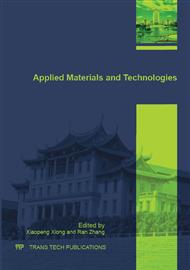p.28
p.35
p.39
p.44
p.48
p.52
p.56
p.63
p.67
Preparation and Properties of Rigid Carbon Felt Thermal Insulation
Abstract:
Matrix derived from resin after carbonization in rigid carbon felt thermal insulation has many advantages. The microstructures and properties of these materials were investigated in this paper. Results showed that matrix tend to accumulate at the intersections of fibers. This can improve mechanical properties and have a little influence on thermal conductivities of the composites. The excellent bending strength of 2.66MPa, compressive strength of 0.91MPa and a high thermal conductivity of 0.81W/(m·K) (at 1500°C) with a matrix concentration of 32.7% is achieved. However, high thermal conductivity is harmful for those materials which are used as thermal insulators.
Info:
Periodical:
Pages:
48-51
Citation:
Online since:
November 2015
Authors:
Price:
Сopyright:
© 2015 Trans Tech Publications Ltd. All Rights Reserved
Share:
Citation:


